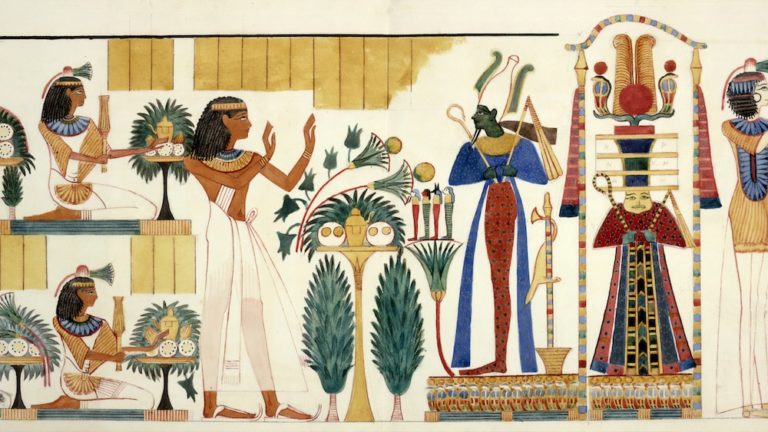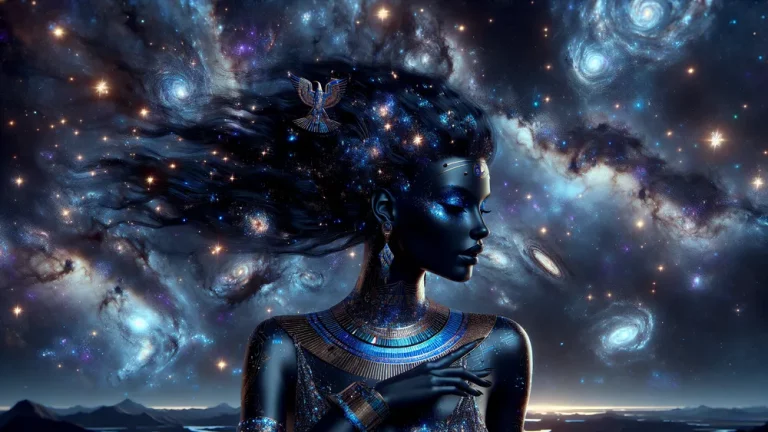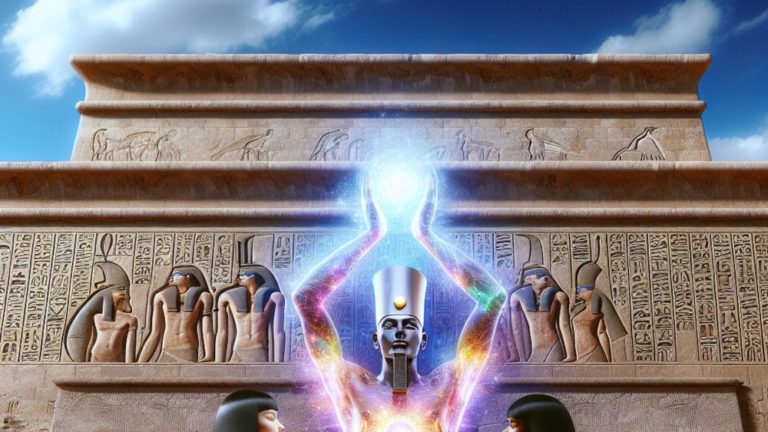Persephone/Kore: Mythical Queen Of The Underworld
Persephone/Kore: Mythical Queen Of The Underworld
Dive into the enthralling world of Persephone/Kore, a figure that seamlessly weaves together the tapestry of ancient myths and seasonal changes. It’s a story that, I tell ya, spans the vibrant life of the Earth itself and the shadowy depths of the Underworld.
Key Points:
- Persephone/Kore embodies dual roles as Goddess of Spring and Queen of the Underworld.
- The myth explains the changing seasons through Persephone’s abduction and return.
- Persephone/Kore’s symbols include pomegranates, torches, flower wreaths, and grain stalks.
- Festivals like the Eleusinian Mysteries honored Persephone/Kore’s dual nature.
- The myth of Persephone/Kore influenced other cultures, highlighting universal themes.
- Persephone/Kore symbolizes themes of life, death, rebirth, and the bond between parent and child.
- The story of Persephone/Kore intertwines mythology with the natural world and human experience.
Persephone/Kore isn’t just any mythological character; she symbolizes growth, death, and rebirth, playing a crucial role in explaining the natural world around us. So, get ready to explore the dual identity of this goddess/queen with a tale that’s as fascinating as it gets.
The Dual Identity of Persephone/Kore
Talking about Persephone/Kore is essentially delving into a story of two halves. It’s awesome how one deity can encapsulate such contrasting realms – from the blooming flowers of spring to the solemn depths of the underworld. I mean, talk about range, right?
Persephone: The Goddess of Spring
When it comes to Persephone as the Goddess of Spring, it’s all about renewal and growth. She’s the reason we get to see flowers blooming and feel the earth come alive after winter. Pretty cool, eh?
- Symbolizes new growth
- Brings life back to the earth
- Responsible for the season of spring
- Emanates joy and vitality
Embrace the concept of renewal and growth, symbolized by Persephone as the Goddess of Spring, bringing life back to the earth with joy and vitality.
Kore: Queen of the Underworld
As Kore, the Queen of the Underworld, things get a tad more intense. Imagine going from being a symbol of life to ruling over the land of the dead. Total 180, but she owns it.

In this role, she:
- Overlooks the departed souls
- Maintains order in the underworld
- Represents the cycle of life and death
- Shows that even in darkness, there’s power and governance
It’s honestly fascinating how Persephone/Kore embodies two extremes. From uplifting growth to the somber reality of mortality, she’s a girl with jobs in totally different worlds.
The Significance of Names and Titles
Names and titles aren’t just a bunch of letters strung together; they’re packed with meaning. And when it comes to our girl Persephone/Kore, each name she’s known by highlights a different aspect of her identity.
| Name | Significance |
|---|---|
| Persephone | Symbolizes rebirth and vitality as the Goddess of Spring |
| Kore | Represents authority and order as the Queen of the Underworld |
It’s like she’s got this dual personality going on, and each name is a key that unlocks a different side of her. It’s an easy way to remember just how awesome and multifaceted she is.
The Myth of Persephone/Kore
The myth of Persephone/Kore is like the ultimate drama that explains why we have seasons. It’s not just a story; it’s the heartbeat of ancient mythology, giving insight into life, death, and the natural cycle. No big deal, just the foundation of seasons.
The Abduction by Hades
The abduction of Persephone by Hades is a key moment that sets everything in motion. One minute she’s smelling flowers, the next, she’s being whisked away to the underworld. Talk about a bad day.
- Hades, struck by her beauty, decides he needs her as his queen
- Persephone, picking flowers, is suddenly abducted to the underworld
- This act kicks off a series of events that lead to the cycle of seasons
- It shows how one moment can change everything, especially in myths
Life can drastically change in an instant, just like how Persephone’s abduction by Hades set off a chain of events in the myth, highlighting the importance of being prepared for sudden shifts.
The Desperate Search by Demeter
Demeter, the goddess of the harvest, was stricken with grief upon discovering her daughter Persephone was missing. She scoured the earth, her despair so great that no crops would grow.
Roaming the earth, day and night, Demeter’s quest was relentless. She met with gods and mortals alike, begging for information on her daughter’s whereabouts, but to no avail. The world was plunged into famine as she neglected her duties, showcasing the deep bond between mother and daughter.

The Compromise and Seasonal Cycle
The resolution of Persephone’s abduction by Hades hinged on a compromise that divided her time between the underworld and the earth. This arrangement explains why we have seasons.
- Spring and Summer: When Persephone is above ground with Demeter, the earth flourishes.
- Autumn and Winter: When she returns to rule the underworld as queen, the earth goes dormant.
This cycle of abduction and return gives us a natural explanation for the changing seasons, grounding the myth in the rhythms of the natural world.
The Cult and Worship of Persephone/Kore
Persephone/Kore was worshipped across the Greek world, her dual identity as both goddess of spring and queen of the underworld inspiring a variety of rites and festivals. These ceremonies bridged the living world with the dead, celebrating the cycles of life, death, and rebirth.
Rites and Festivals
The Eleusinian Mysteries were among the most significant festivals dedicated to Persephone/Kore. Initiation into these mysteries promised wisdom and understanding of the afterlife.
- Spring rites: Celebrated Persephone’s return, symbolizing rebirth and renewal.
- Autumn rites: Mourned her departure to the underworld, marking a time of reflection.
These festivals allowed participants to feel a connection with the divine, experiencing the sorrow and joy of Persephone’s dual life.
Embrace the cycles of life, like Persephone’s journey between the underworld and the living world, to deepen your understanding of sorrow and joy.
Symbols and Representations
| Symbol | Representation |
|---|---|
| Pomegranate | Binding Persephone to the underworld |
| Torch | Light in the darkness, guiding souls |
| Flower wreath | Beauty and rebirth of nature |
| Stalks of grain | Fertility and abundance |
These symbols carry deep meanings, connecting people with the myths and teaching lessons about the cycles of life.
Influence on Other Cultures and Myths
Persephone/Kore didn’t just influence Greek mythology; her story found echoes in Roman mythology and beyond. The Romans knew her as Proserpina, and her myth inspired similar goddess narratives across different cultures.
Her duality as goddess and queen underscores universal themes of life, death, and rebirth. By exploring these parallels, we see how interconnected our human experiences are, transcending culture and time.
List of All Greek Mythology Gods
If you’re craving more epic stories of gods, goddesses, heroes, and monsters, check out this incredible list of all the Greek gods. It’s your golden ticket to diving deeper into the enchanting world of Greek mythology.

FAQs
1. What are the primary symbols associated with Persephone/Kore?
The primary symbols associated with Persephone/Kore include pomegranates, symbolizing her marriage to Hades and her role as the queen of the underworld, and wheat, reflecting her identity as the goddess of spring and agriculture. These symbols encapsulate her dual role and influence over life and death.
2. How does the myth of Persephone/Kore explain the seasons?
The myth of Persephone/Kore explains the seasons through her annual journey between the underworld and the earth’s surface. Her time spent with Hades in the underworld corresponds to the winter months, when the earth is barren, reflecting her mother Demeter’s mourning. Upon her return, spring blooms, signifying Demeter’s joy and the rejuvenation of life.
3. Can you name any festivals dedicated to Persephone/Kore?
Sure, the Eleusinian Mysteries were key festivals dedicated to Persephone/Kore and her mother, Demeter. Celebrated near Athens, these ancient rites marked the myth of Persephone’s abduction and return, symbolizing the cycle of life and death and the promise of rebirth and renewal.
4. How did Persephone/Kore influence the myths of other cultures?
Persephone/Kore’s myth significantly influenced other cultures, particularly through the themes of life, death, and rebirth. Similar stories can be seen in various myths worldwide, where deities or heroes undergo death or descent into the underworld, followed by a triumphant return or resurrection, embodying universal cycles of nature and human life.
Conclusion
In wrapping up, diving into the lore of Persephone/Kore really brings to light how deeply intertwined mythology is with the natural world and human experience. Her story touches on themes that resonate with us all: the cycles of life and death, the changing seasons, and the enduring bond between parent and child. Persephone/Kore stands as a lasting symbol of regrowth and renewal, embodying the promise that life, like spring, will always find a way to blossom anew.
Thanks for tagging along on this mythological journey. I hope it’s been as awesome for you as it has for me. Stay curious and keep exploring the past – it’s filled with stories waiting to be rediscovered.
Catch you later,
Cedric







